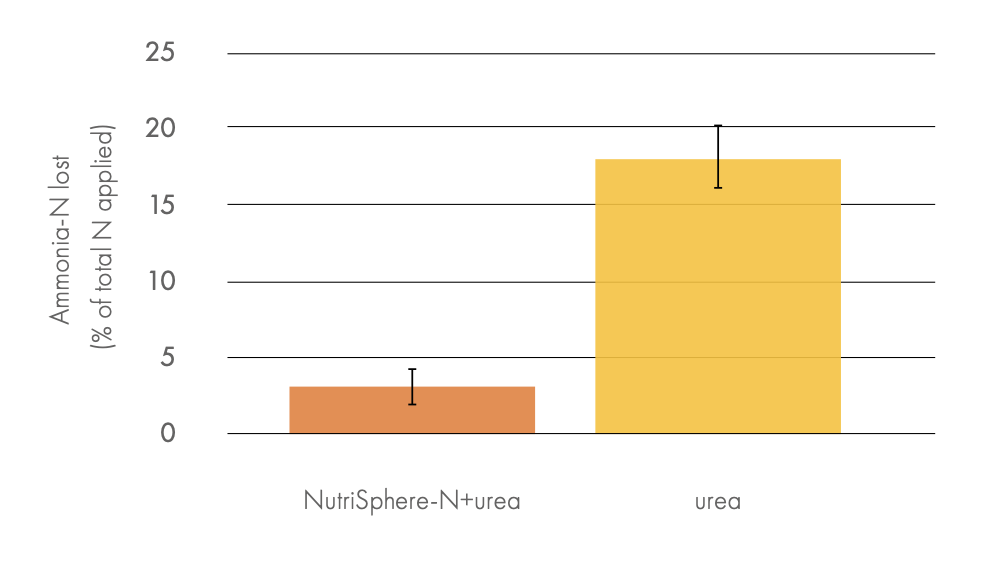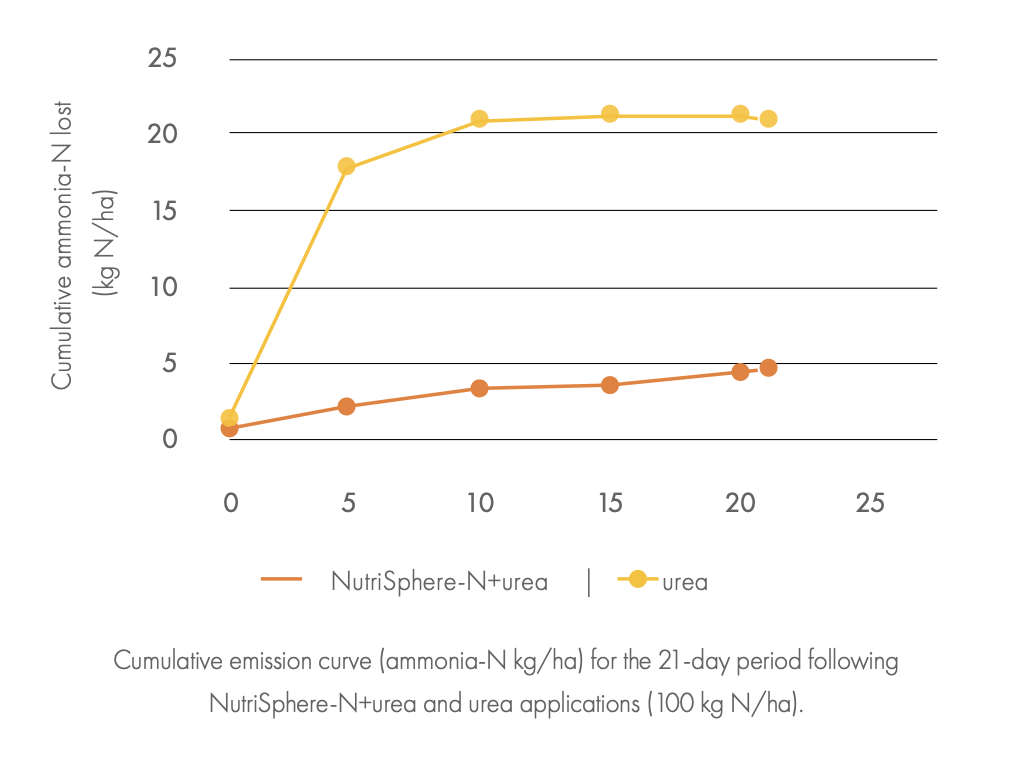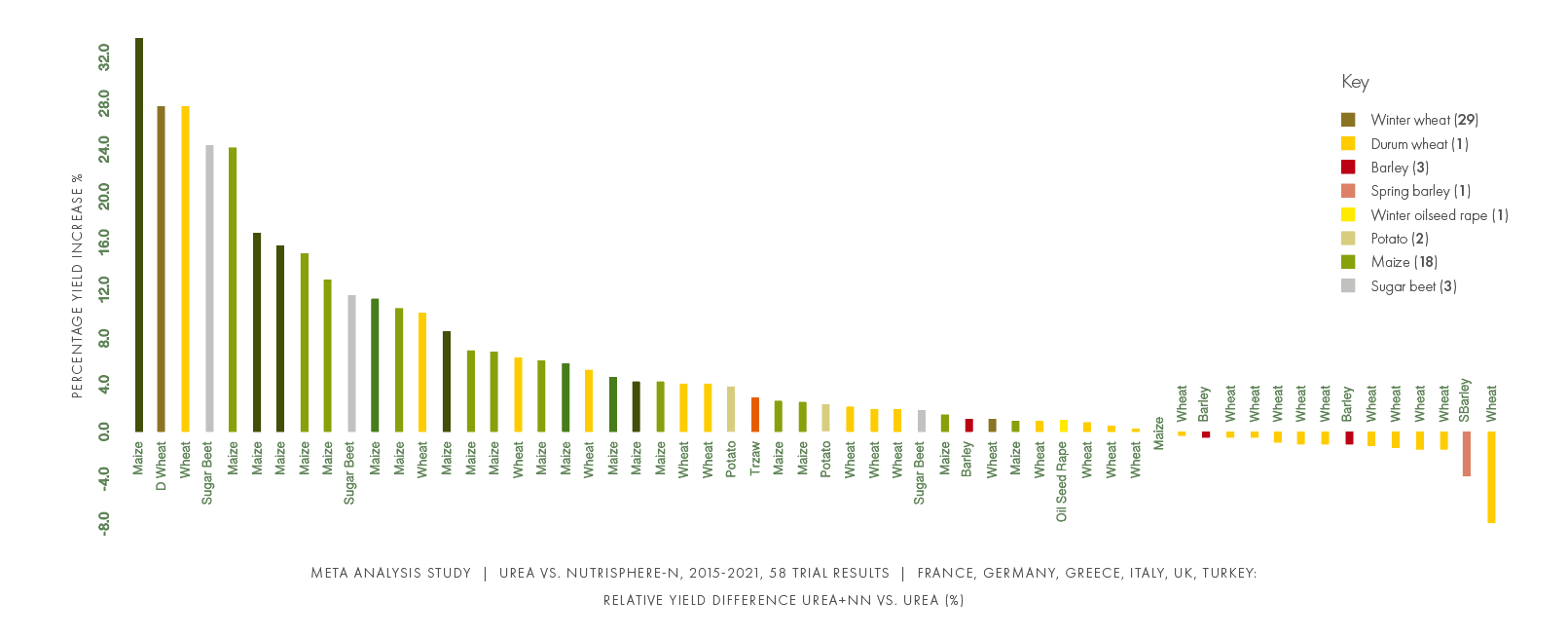Download PDF Brochure
Introduction
Stability
NutriSphere products and treated fertilisers demonstrate good stability when stored as recommended.
o NutriSphere-N® has a shelf life of 2 years.
o Granular urea treated with NutriSphere-N has a shelf life of 12 months and no deterioration during the storage period when blended with phosphate or sulphur based fertilisers.
Product Introduction
With governments preparing their clean air and clean water strategies there is a growing need for new technologies to help combat the environmental impact of ammonia release from urea-based fertilisers, the greenhouse gas nitrous oxide and nitrates as water pollutants. Verdesian Life Sciences Europe is able to provide a novel approach by introducing two products for urea granular and liquid-based fertilisers
Components
NutriSphere-N (and NutriSphere-NL for UAN) are 40% w/w aqueous solutions of maleic-itaconic acid copolymer. This dicarboxylic acid polymer is a large, highly water-soluble organic compound presented in the form of a single phase solution containing no immiscible particles. The itaconic acid is a fermentation product from maize and the maleic acid is commonly used in the food industry.
Use Rates
NutriSphere-N – rate: 2.1L/tonne granular urea, this provides the recommended 1030 ppm of active ingredient.
Methods of Application
NutriSphere-N is applied at the fertiliser blending stage by spraying onto granular urea on a conveyor belt or into a drum blender. NutriSphere -N is purchased premixed by the grower.
Due to degradation risk above 40oC the copolymer is not suitable to be introduced upstream at production sites for urea where manufacturing temperatures of above 60oC are common.
Product Trials and Results
Volatilisation Study Under Field Conditions 2021
A sponsored field volatilisation study in grassland monitoring ammonia release from NutriSphere-N treated urea granules was conducted in May 2021 by ADAS Gleadthorpe, UK.
STUDY - Ammonia emissions following the application of NutriSphere-N treated granular urea and urea.
Trial Outline
Total ammonia emissions (by plot) for the 21-day period were determined following the application of NutriSphere-N treated granular urea and urea applied at 100 kg N/ha on 4 May 2021.
Wind tunnels based on the design of Lockyer (Lockyer, D.R. 1984) were used to measure ammonia emissions following fertiliser application. This technique is typically used in field experiments for assessing fluxes from small plots for comparative experiments (Misselbrook et al., 2005; Miola et al., 2015).
There were four replicates of each treatment, arranged in a randomised block design.
Ammonia emissions after 7 and 14 days
After 7 days mean ammonia emissions from the NutriSphere-N treated granular urea (mean: 2 kg ammonia-N/ha) were significantly lower than from urea (mean: 17 kg ammonia-N/ha), with emission factors of 2 and 17%, respectively (p=0.005). Similarly, after 14 days mean ammonia emissions from the NutriSphere-N treated granular urea (mean: 3 kg ammonia-N/ha) were significantly lower than from urea (mean: 18 kg ammonia-N/ha), with emission factors of 3 and 18%, respectively (p<0.001).
Ammonia emissions after 21 days
Ammonia emissions from the NutriSphere-N treated granular
urea (mean: 4 kg ammonia-N/ha) were significantly lower
than from the urea (mean: 18 kg ammonia-N/ha), (p<0.001)
after 21 days. The emission factors (% of total N applied) were
4% for the NutriSphere-N treated granular urea and 18% for
the urea, respectively.
Emissions Factor: Total ammonia-N lost (% of total N applied)
21 days after NutriSphere-N+urea and urea applications
(100 kg N/ha) to grass.
Product Trials and Results
Volatilisation Study Under Controlled Conditions 2020
A sponsored volatilisation trial performed in June 2020 by University College Dublin (UCD) showed 86% reduction in cumulative emissions of ammonia compared to untreated urea over 20 days. Results were statistically significant at 95% confidence level (p = 0.018).
The 84% reduction in ammonia release at 14 days, meets Reg. (EU) 2019/1009 criteria of 20 % reduction for urease inhibitors.
Meta Analysis Study
Urea vs. NutriSphere-N, 2015-2021, 58 trial results
France, Germany, Greece, Italy, UK, Turkey: relative yield difference urea+NN vs. urea (%)
Agronomic Trial Results
NutriSphere-N: A total of 70 field trials 2015-2021 across FR, PL, GR, DE TR & UK. Average yield 5.4% increase across 6 crops, including wheat, barley, oil seed rape, potato, maize and sugar beet.
There was no observable difference relating to soil pH and type for trials performed with a range of pH 5.1– 8.1.
The trials demonstrated a total 87% positive yield result across all 70 trials.
The Environment
Ammonia Emission
Following fertiliser application, NutriSphere-N treated granular urea showed an average 80% reduction in volatilised ammonia compared to untreated urea after 21-days. At 14 days after application, NutriSphere-N treated granular urea showed an 85% reduction in total volatilised ammonia compared to the untreated urea.
Carbon Footprint
NutriSphere-N has a low carbon foot print value of 0.147 kg CO2 per kg of product (kg CO2-eq/kg 0.147).
This value represents the total amount of carbon dioxide released into the atmosphere per kg of NutriSphere-N when produced.
NutriSphere-N has a specific gravity of 1.12 g/ml, at standard application rate this equates to 2.35 kg of NutriSphere–N applied per tonne of urea fertiliser. Therefore, the additional carbon foot print to be taken into account is 0.346 kg of CO2 per tonne of urea fertiliser treated.
Nitrous Oxide Emission
In an independent cotton trial conducted by the University of California, NutriSphere-NL with UAN reduced the total N2O emissions by up to 61% at 56 and 112 kg nitrogen/ha and by 38 % with no nitrogen applied over a period of 226 days. An emissions factor of 0.2-0.36 was established.
Source: California Department of Food and Agriculture CDFA-Nitrous Oxide Emission Final Report 2015-0707-CDFA-N20-Final report Goorahoo (California State University, Fresno)
Soil Mineral Nitrogen
UAN treated with NutriSphere-NL applied in a fodder maize crop in Dorset significantly reduced the movement of soil mineral nitrogen (SMN) though the soil profile over a 5 month period post fertiliser application.
NutriSphere-NL maintained SMN in the upper soil levels
and reduced SMN level by 34 % at a depth of 90 cm in
the soil compared to a standard UAN treatment.
Source: Wessex water UK 2019
Nitrate Leaching
In a field tile drain trial in grain maize,
UAN+NutriSphere-NL treatment compared to standard
UAN application reduced the detectable nitrate levels in
the outflow from the field tile drains by 42 % two days after
application and 21% after 290 days post application.
Source: Guthrie Centre Iowa, USA 2016
The Environment
Effects On Terrestrial Organisms
Studies (ISO 11268-2/2015) performed at up to 10 times the agronomic dose determined that NutriSphere-N presents no long-term effect on the rate of mortality, reproduction or biomass inhibition of earthworms (Eisenia fetida/ Eisenia Andrei).
The results showed that all rates actually increased the growth and number of larvae during the 12 month study period.
Chronic toxicity test on earthworms
Effects On Soil Microorganisms
Tests were performed with x1, x3, x10 the agronomic
dose of NutriSphere-N. The results found the addition
of NutriSphere-N to the soil surface determined no
long-term influence on carbon transformation in soils.
OECD 217 - Soil Microorganisms: Carbon transformation Test
Results of a study performed with NutriSphere-N treated
urea by Athens University reported a 73.49 % increase in
Mycorrhizal colonization after 69 days compared with
untreated urea.
Effects on Mycorrhizal fungi Agricultural University of Athens
Effects on Plants
Results of a study performed with Avena sativa (Oats) and Brassica napus (Oil Seed Rape) at up to 10 times the agronomic dose found that NutriSphere-N had no adverse effects. The plants showed normal emergence (7 days), growth variation (20 days) and no phytotoxicity.
Emergence and early growth of higher plants ISO 11269-2:2012
Effects On Aquatic Organisms
Acute & chronic studies (12 month) performed with NutriSphere-N at up to 10 times the agronomic dose determined there was no long-term effect on the mobility of Daphnia.
Water flea (Daphnia magna) mobility inhibition ISO 6341:2012
Acute & chronic studies (12 month) performed with NutriSphere-N at up to 10 times the agronomic dose determined there was no long-term effect on the growth of algae.
Algal growth inhibition (P. subcapitata) ISO 8692:2012
Acute study (96 hr) performed with NutriSphere-N at up to 10 times the agronomic dose determined there was no effect on fish mortality.
Acute toxicity to Freshwater fish (Danio rerio) ISO 7346-1:1996
Summary
NutriSphere-N is a highly water-soluble organic compound primarily created from fermentation of maize.
The technology keeps the fertiliser where it is needed for longer, increasing nitrogen efficiency, yield and crop quality.
The technology is proven to reduce the three sources of N loss by using its high cation exchange capacity to deny certain bacteria key elements (Ni, Cu, Fe).
The technology has demonstrated a beneficial effect on soil biome.
NutriSphere-N is proven to provide farmers with a return on investment.
The technology helps reduce the environmental impact on air and water quality. NutriSphere-N breaks down in the soil to carbon, hydrogen and oxygen.





















